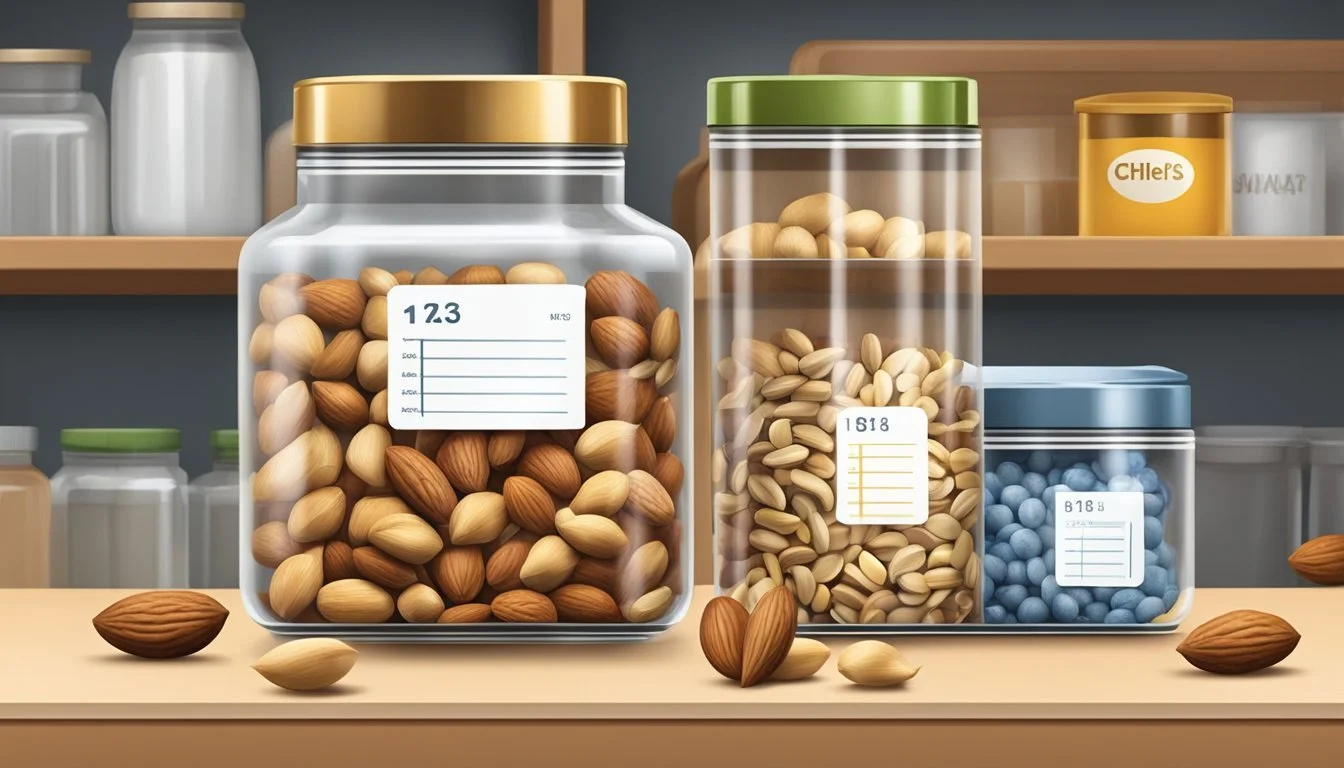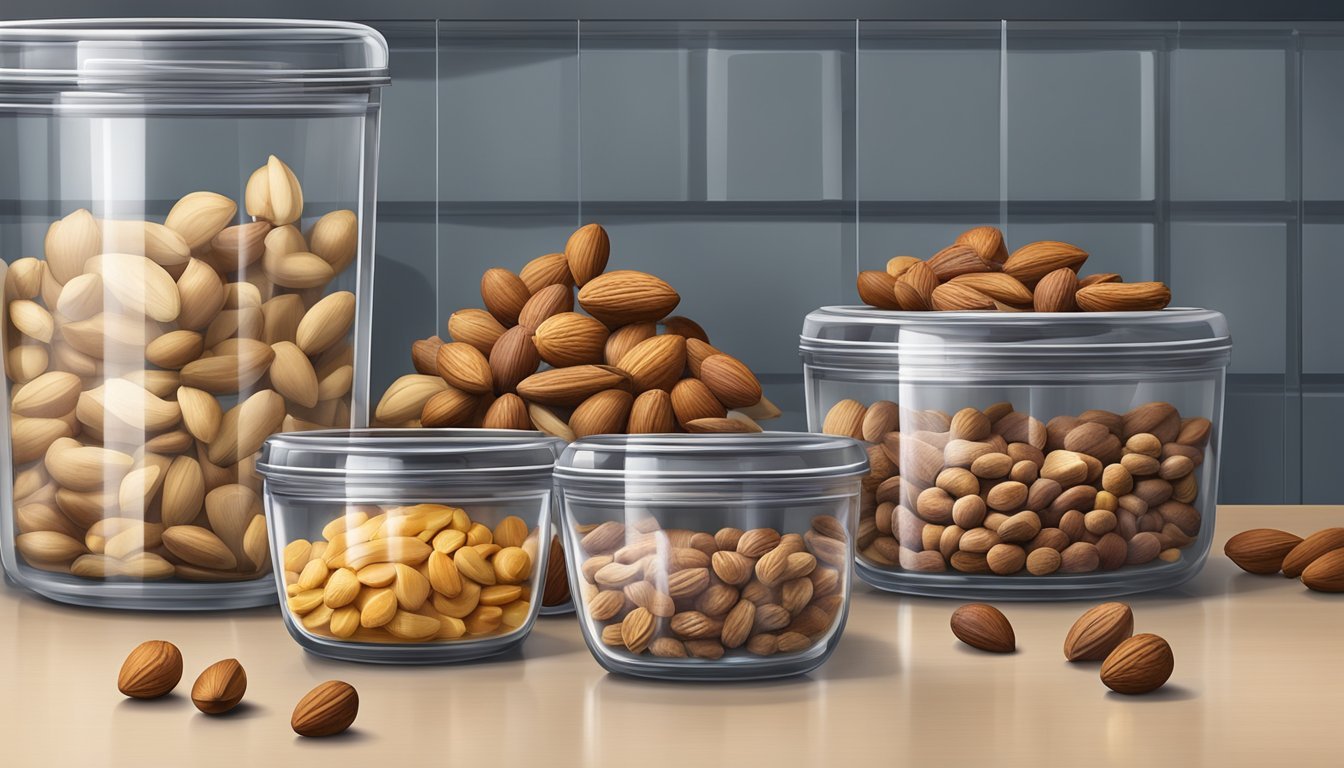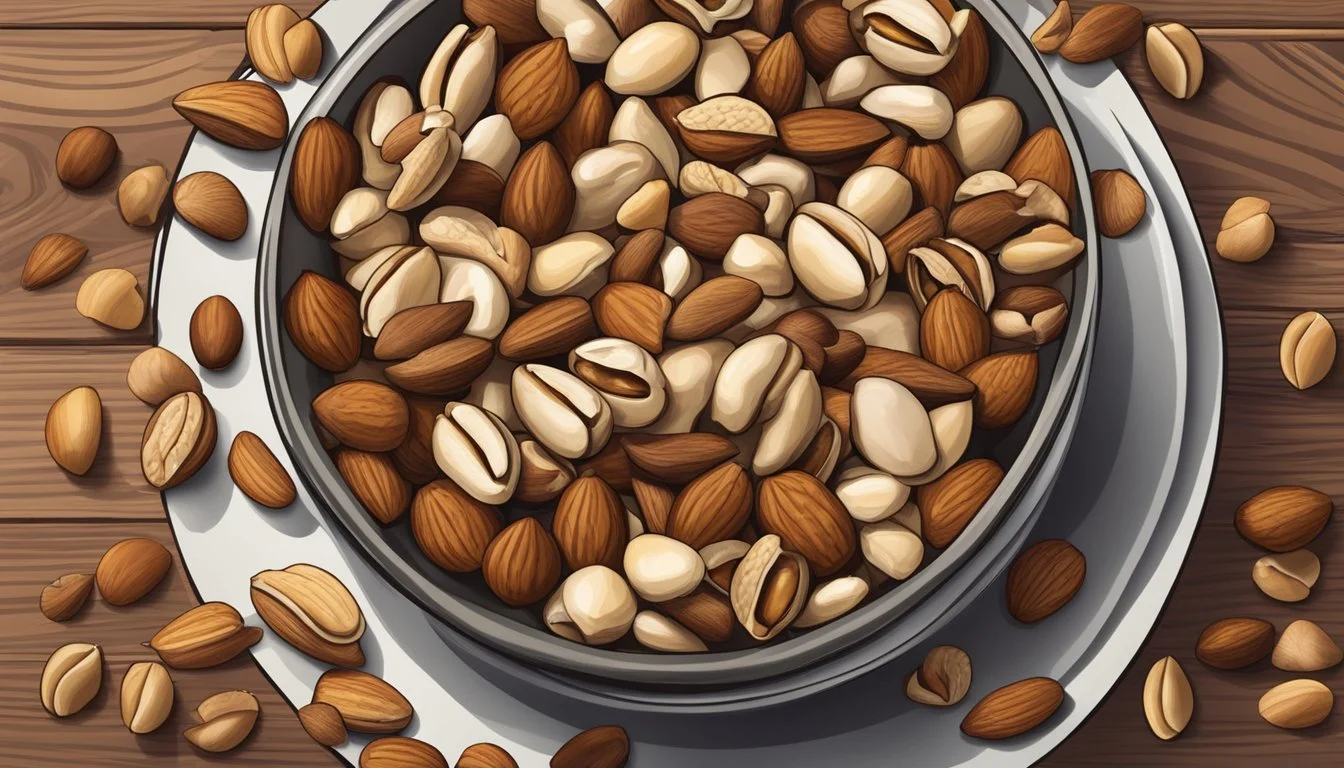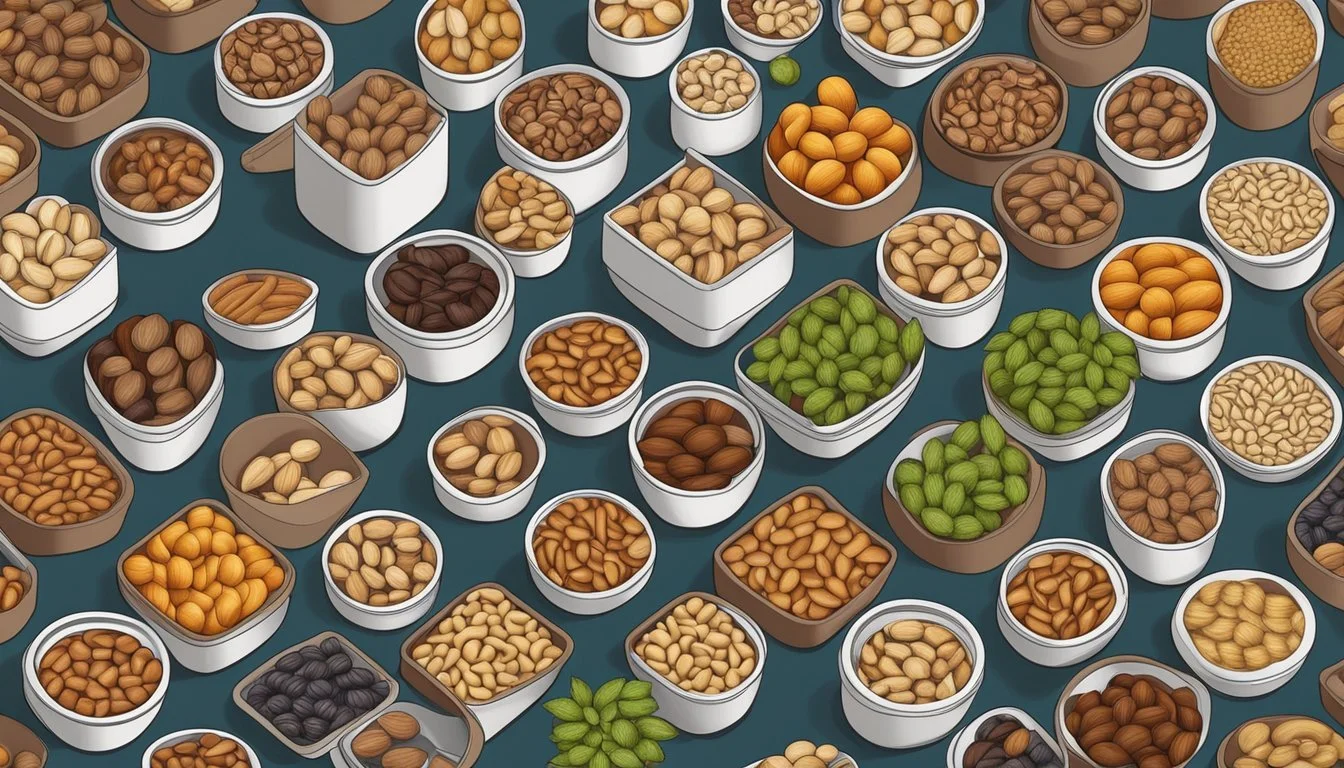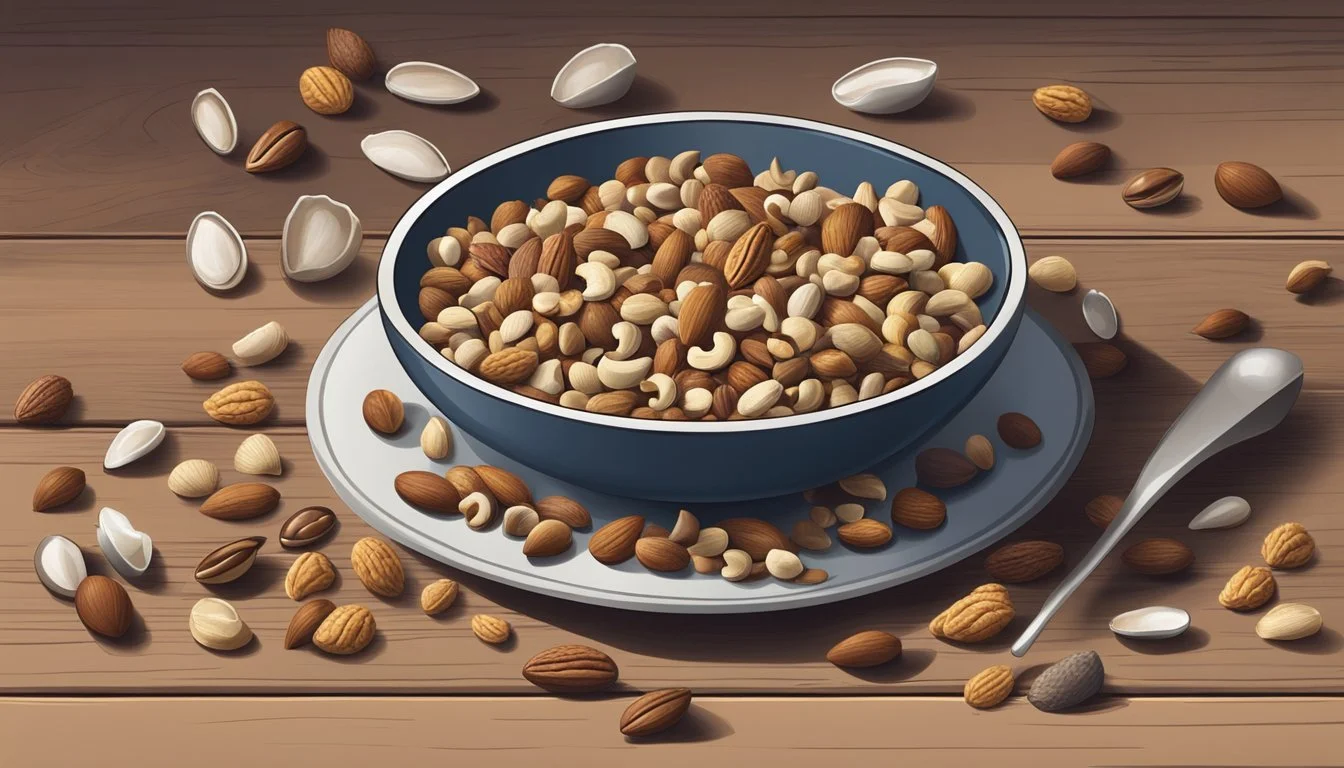How Long Do Mixed Nuts Last?
Shelf Life and Storage Tips
When it comes to the shelf life of mixed nuts, consumers should keep in mind that the duration for which they remain fresh depends on whether the nuts are shelled or unshelled, and whether the package has been opened. Unopened canned or bottled mixed nuts typically retain their quality for a year or even longer if stored in a cool, dry place, away from direct sunlight. This long shelf life is advantageous for keeping a convenient and nutritious snack on hand without frequent shopping.
Once mixed nuts are opened, factors such as air, heat, and humidity can impact their freshness. If stored properly in a cool, dry place, opened mixed nuts can last up to six months. To prolong their freshness after opening, storing the nuts in the refrigerator or freezer is an effective strategy. Storing mixed nuts at lower temperatures can slow down the degradation process, thereby preserving their taste and nutritional value for extended periods.
It is crucial for consumers to be aware of the signs of spoilage, such as changes in texture, discoloration, or an off smell, which indicate that mixed nuts are no longer suitable for consumption. By understanding these key factors and storage techniques, individuals can enjoy the optimal flavor and quality of mixed nuts over time.
Understanding Shelf Life and Freshness
Mixed nuts are a nutritious and convenient snack option, but their shelf life and freshness can vary significantly. This section sheds light on how long mixed nuts remain edible and how to determine their freshness.
Factors Affecting Shelf Life
Several factors influence the shelf life of mixed nuts:
Storage Conditions: Nuts last longer when stored in a cool and dry place. Exposure to heat, air, and humidity accelerates spoilage.
Packaging: Nuts sealed in airtight packages experience less exposure to oxygen, which extends shelf life.
Type of Nuts: The variety of nuts can affect longevity. For instance, almonds may last up to a year, while pine nuts may have a shorter shelf life.
Signs of Freshness and Spoilage
When evaluating mixed nuts for freshness:
Color: Fresh nuts usually have a vibrant, consistent color free from dark spots or discoloration.
Smell: A rancid odor indicates spoilage. Fresh nuts should have a mild, nutty aroma.
Taste: A bitter or sour taste can signify that the nuts are past their prime.
Texture: Nuts should be crunchy, not soft or rubbery.
Mold: If visible, mold is a clear sign that the nuts should not be consumed.
Rancidity is a common form of spoilage in nuts, affecting both their flavor and nutritional value. It results from the fats within the nuts oxidizing, which can happen over time or due to improper storage.
Types of Mixed Nuts and Packaging
Mixed nuts come in various assortments and packaging options, each affecting their shelf life and freshness. This section will discuss the common types available and how different packaging methods influence their longevity.
Common Varieties
Mixed nuts typically include a combination of some of the most popular nuts, each with its own texture, flavor, and nutritional profile. Common varieties found in mixed nuts include:
Almonds: Known for their crunch and slightly sweet taste.
Cashews: Recognized by their unique shape and buttery flavor.
Walnuts: Notable for their rich, earthy taste and high omega-3 content.
Pistachios: Appreciated for their distinctive green hue and savory flavor.
Hazelnuts: Often included for their sweet taste and crunchy texture.
Pecans: Valued for their buttery and slightly bitter profile.
Pine Nuts: Smaller in size, offering a soft and subtle taste.
Peanuts: Commonly added due to their familiar taste and affordability.
Chestnuts: Less frequent in mixes, they provide a mild and sweet flavor.
Impact of Packaging on Longevity
The shelf life of mixed nuts is significantly influenced by their packaging. Nuts can be found in various packagings, such as:
Bulk: Purchased loose, these require proper storage at home to maintain freshness.
Canned/Bottled: Airtight and sealed to protect from air and moisture, extending shelf life.
Pouches/Bags: Often resealable, offering convenience but may have a shorter shelf life once opened.
Premium packaging often includes nitrogen flushing or vacuum sealing, further extending shelf life by reducing oxidative rancidity. Maintaining an optimal storage environment, away from heat, light, and moisture, is crucial regardless of the packaging type.
Proper Storage Techniques
Proper storage is crucial for extending the shelf life of mixed nuts. It involves maintaining specific conditions and differentiating between short-term and long-term storage methods.
Ideal Conditions for Storage
Mixed nuts retain their quality best when stored in a cool, dry, and dark environment. These conditions help to maintain the nuts' freshness by minimizing exposure to elements that accelerate spoilage. A consistent temperature between 32°F (0°C) and 41°F (5°C) is optimal to avoid the natural oils in nuts from going rancid. Humidity levels should be kept low to prevent mold growth. It is recommended to store nuts in airtight containers to protect them from unwanted air and light exposure.
Storage Tips for Ideal Conditions:
Temperature: Keep at a consistent 32°F to 41°F.
Humidity: Maintain low levels.
Container: Use clean, air-tight containers.
Location: Choose a space that's away from direct light and sources of heat.
Short-Term vs. Long-Term Storage
For short-term storage, placing mixed nuts in an airtight container in the pantry or another dry place can maintain their freshness for a duration ranging from a few weeks up to six months. Monitoring the surrounding temperature and humidity is still important, even for short-term storage, to ensure quality is preserved.
Long-term storage is beneficial for extending the shelf life beyond six months. Freezing mixed nuts in an air-tight container is ideal, and they can be kept for at least one year without significant loss of quality. When storing nuts in the refrigerator, expect them to stay fresh for approximately four to six months. It's crucial that the container is sealed properly to avoid any moisture from the refrigerator affecting the nuts.
Storage Methods for Short-Term vs. Long-Term:
Pantry Storage (Short-Term): Up to six months in an airtight container.
Refrigerator Storage (Long-Term): Four to six months in a sealed container.
Freezer Storage (Long-Term): At least one year in an airtight container.
The Effects of Temperature and Environment
Mixed nuts' shelf life is significantly influenced by temperature and environmental conditions such as humidity, heat, and exposure to air and light.
Room Temperature Storage
Storing mixed nuts at room temperature is convenient, but they should be kept in a cool, dry place to prevent the oils from becoming rancid. Sealed containers minimize air exposure and moisture, which can lead to spoilage. Under these conditions, mixed nuts can maintain their quality for up to a month after opening.
Refrigerating Nuts
The refrigerator provides a stable, cool environment that slows down the degradation process. By storing nuts in the fridge, which is generally around 35-38°F (1.7-3.3°C), shelf life can be extended beyond room temperature storage. It's crucial to use airtight containers to protect the nuts from humidity and odors from other foods.
Freezing Nuts for Extended Freshness
Freezing nuts can significantly extend their longevity, potentially preserving their quality for months or even up to a year. A crucial factor in avoiding freezer burn is to ensure nuts are in airtight containers or resealable freezer bags, which also protects them against undesirable air exposure and moisture. Keeping them in a consistently cold freezer at 0°F (-18°C) or below stabilizes the oils and prevents rancidity.
Nut Quality and Consumption
When considering the shelf life of nuts and their benefits, it's important to not only focus on how long they can be stored but also on their quality and the health advantages they can provide when consumed responsibly.
Determining Nut Quality
One can determine the quality of nuts through several indicators. Fresh nuts should be firm to the touch and have a clean, crisp taste without any bitterness. Rancidity is a common problem with nuts due to their high unsaturated fat content; once the oils in nuts begin to spoil, they develop a distinctly unpleasant taste and smell. Spoiled nuts, which may have mold or an unusual appearance, should not be consumed. To check for quality, look for:
Appearance: Nuts should be free from mold and spots.
Smell: A fresh nut should have a mild, nutty aroma, not a sour or musty smell.
Taste: Taste a nut to ensure it hasn't gone rancid. Fresh nuts should not taste bitter.
Health Benefits and Safe Consumption
Nuts are a nutrient-dense snack high in protein, fiber, and healthy fats, primarily unsaturated and monounsaturated fats, which can support heart health by managing cholesterol levels. They are also a source of antioxidants contributing to overall health. However, nuts should be consumed in moderation due to their high calorie and fat content. To enjoy the benefits of nuts while ensuring they’re safe to eat, consider the following:
Storage: Keep nuts in a cool, dry place or refrigerate to prolong freshness.
Portion Control: A handful of nuts is a good serving size to reap health benefits.
Variety: Different nuts offer various benefits—for heart health, almonds and walnuts are particularly beneficial due to their high unsaturated fat content.
Maximizing Nut Longevity
To preserve the freshness of nuts and extend their shelf life, specific storage methods should be applied at home, and certain professional tips can be particularly effective.
Best Practices for Storing Nuts at Home
Storing nuts properly at home is critical to maintaining their quality. Airtight containers are essential in keeping nuts fresh as they minimize exposure to oxygen, which can cause nuts to go rancid. It's recommended to:
Use glass jars or plastic containers with tight seals to store nuts.
Keep nuts in a cool, dry place away from direct sunlight or heat sources.
For nuts purchased from bulk bins, be sure to transfer them into airtight containers as soon as possible. Also, always check the expiration date on packaged nuts to gauge their expected shelf life. Labeling containers with the purchase or bin date helps to track how long the nuts have been stored.
Professional Tips for Extending Nut Shelf Life
Professionals in the food industry employ certain strategies to ensure nuts last as long as possible before reaching the consumer. Borrowing from their playbook:
Store nuts in the refrigerator if they will be used within a few months, or freeze them for long-term storage.
When freezing nuts, placing them in vacuum-sealed bags greatly reduces the presence of oxygen, thus extending their freshness.
If storing bottled mixed nuts, do not open until ready to use to maintain their shelf life, which can be up to a year or more under ideal conditions.
Storing nuts in the refrigerator or freezer also slows down the degradation of oils within the nuts, keeping them from becoming rancid. Regardless of the storage method, keeping nuts away from strong odors is crucial since they can absorb these smells, affecting their taste and quality.
Creative Uses for Mixed Nuts
Mixed nuts, versatile and packed with flavor, can be used in various culinary applications, from enhancing meals to creating delightful homemade snacks. The section below explores specific ways to incorporate mixed nuts into everyday cooking and baking, and how to prepare homemade snack mixes.
Cooking and Baking
In cooking and baking, mixed nuts can add a crunchy texture and rich taste to a dish. One can roast the nuts to enhance their natural flavors before incorporating them into a recipe. Here's how:
Roasting: Spread the nuts in a single layer on a baking sheet, lightly season with salt or spices, and bake at 350°F (175°C) for 10-15 minutes, until golden brown.
After roasting, they can be incorporated into a variety of baked goods. For example:
Bread and Muffins: Add chopped mixed nuts into the batter to add a crunchy texture.
Granola: Mix with oats, seeds, sweeteners, and dried fruit before baking to make homemade granola, perfect for breakfast or snacking.
Homemade Snacks and Mixes
Creating homemade snacks and mixes is a creative way to use mixed nuts. They can serve as the base for a nutritious snack that can be customized with one's preferred seasonings and ingredients:
Trail Mix: Combine mixed nuts with seeds, dried fruits, and chocolate pieces to make a tailored trail mix.
Snack Bars: Mix with honey, oats, and a variety of seeds to form bars that are ideal for meal prep and on-the-go snacking.
Understanding Rancidity
Rancidity is a process that causes oils in nuts to break down, resulting in an unpleasant odor and taste. It often makes the nuts unfit for consumption. This degradation can occur due to exposure to air, light, and heat, which accelerates the reaction of fats with oxygen—a process known as oxidative rancidity.
Signs of Rancidity:
Smell: Nuts develop a distinctive smell, reminiscent of paint or nail polish.
Taste: The flavor turns sharply bitter or sour.
Texture: Oils may become sticky or syrupy, altering the nut's natural crispness.
Rancidity not only affects flavor but can also impact the nutritional value of nuts. Spoiled nuts may become a source of harmful free radicals, which are implicated in various health issues.
Storage Tips to Prevent Rancidity:
Cool Conditions: Store nuts in a cool, dry place away from direct sunlight.
Airtight Containers: Use vacuum-sealed or airtight containers to minimize oxygen exposure.
Refrigeration: Refrigerate nuts to extend their freshness beyond the pantry expiration date.
Freezing: For long-term storage, nuts can be kept in the freezer, significantly delaying rancidity.
Checking the expiration date is a good initial indicator of freshness but relying on sensory cues such as smell and taste is essential to determine if nuts have gone rancid. By understanding the nature of rancidity and utilizing proper storage methods, one can extend the shelf life of mixed nuts and ensure they remain a delightful and healthy snack.
Identifying Spoilage and Mold
When assessing the quality of mixed nuts, one must be vigilant for signs of spoilage and mold growth. Nuts that have spoiled may exhibit a variety of changes indicating they are no longer safe to eat.
Visual Signs:
Mold: Look for any fuzzy or powdery spots, which can range in color from white to green or black. If mold is present, it's a clear indication that the nuts have expired.
Discoloration: Nuts appearing darker than usual or with an uneven color may be stale or spoiled.
Odor and Texture:
Smell: A rancid or sour odor is a sure sign of spoilage, as nuts contain fats that can oxidize and produce unpleasant smells.
Feel: Nuts normally have a crisp texture. If they feel mushy or slimy, spoilage has likely occurred.
Taste Test:
Note: This should be a last resort after passing visual and smell checks.
Taste a small piece: If the nut tastes bitter or sour, it has gone bad and should not be consumed.
Safety Precautions:
It is important to handle suspected spoiled nuts with care to avoid cross-contamination with other foods.
To prevent spoilage and maintain their quality, nuts should be stored in airtight containers away from heat and humidity. If nuts show any signs of spoilage or mold, they should be discarded to ensure safety.
Nut Varietals and Their Shelf Life
Nuts are a nutritious and long-lasting food option, with shelf life varying greatly depending on the type and whether they are shelled or unshelled.
Shelled vs. Unshelled Nuts
Shelled nuts typically have a longer shelf life than unshelled nuts due to the extra layer of protection from the elements. Unshelled nuts like pistachios and peanuts might last about two months when stored at room temperature, whereas shelled forms can remain edible for an additional few months if kept in favorable conditions.
Shelled: Extend shelf life by months, store in cool, dry places.
Unshelled: Shorter shelf life, more exposed to air and moisture.
Comparison of Different Nut Types
Nut Type Shelf Life (Shelled) Shelf Life (Unshelled) Cashews Up to 6 months 1-2 months Walnuts 6-12 months 3-6 months Almonds 9-12 months 6-9 months Pistachios Generally 1 year 3-6 months Hazelnuts 3-4 months 1 month Pecans 6-12 months 2-4 months Pine Nuts 1-2 months 3-4 weeks Peanuts 6-9 months (for in-shell peanuts) 1-2 months Chestnuts 1 month (due to high moisture content) 2-3 weeks
Almonds and pistachios, in particular, stand out for their longer shelf lives due to their low moisture content and high levels of monounsaturated fats that help to preserve freshness. In contrast, chestnuts have a much shorter shelf life because of their higher moisture levels which can lead to quicker spoilage. To maximize longevity, nuts should be stored in airtight containers in cool and dry areas away from direct sunlight.
Nutrient Content and Health Aspects
Mixed nuts are packed with essential nutrients that contribute to overall well-being. These nutrient-dense snacks provide protein, fiber, and a variety of healthy fats, including a substantial amount of monounsaturated fat. The protein content in mixed nuts is crucial for tissue repair and muscle building, while fiber plays a vital role in digestive health.
Protein: A serving of mixed nuts can contribute to daily protein intake, aiding in the body's repair processes.
Fiber: Essential for a healthy digestive system, nuts contain dietary fiber which can aid in maintaining a healthy weight.
A significant health benefit of mixed nuts is their contribution to heart health. The monounsaturated and polyunsaturated fats in nuts are known to improve cholesterol levels by reducing the harmful low-density lipoprotein (LDL) cholesterol. This shift in cholesterol balance supports a healthy cardiovascular system.
Nut Type Healthy Fats Antioxidants Almonds High monounsaturated Rich Pistachios High monounsaturated Moderate Walnuts High polyunsaturated Moderate
Moreover, these fats contribute to the reduction of inflammation in the body, an underlying factor in many chronic diseases. Mixed nuts also contain antioxidants, compounds that help fight oxidative stress and may reduce the risk of chronic diseases.
In summary, consuming mixed nuts can play a part in a balanced diet that promotes heart health and reduces the impact of inflammation, courtesy of their valuable content of proteins, fibers, and a variety of fats beneficial to the body's systems.
Buying and Storing in Bulk
When purchasing mixed nuts in bulk, consumers often believe they are making an economically savvy choice. Buying in larger quantities usually saves money and can reduce packaging waste. However, caution is needed when purchasing from bulk bins. The turnover rate of these bins and how long they've sat can be uncertain, potentially affecting the freshness of the nuts.
Storage tips are crucial for maintaining the quality of bulk nuts. One should transfer nuts to an airtight container upon arriving home. This limits exposure to air, which can accelerate spoilage. Storing them in a cool, dry place, away from light and heat, is also essential to preserve their taste and quality. For those with enough space, the refrigerator or freezer can significantly extend their shelf life.
It's important to label the container with the purchase or expiration date. This will help keep track of how long the nuts have been stored. Here is a simplified guideline for the expected shelf life of mixed nuts under different storage conditions:
Storage Location Expected Shelf Life Pantry Up to 3 months Refrigerator Up to 1 year Freezer 2 years or more depending on type
Remember, nuts have natural oils that can turn rancid over time, so sensory checks for taste and smell are recommended before use, regardless of the printed expiration date. All these measures ensure the optimal quality and longevity of mixed nuts purchased in bulk.
Advanced Storage Solutions
For consumers seeking to maximize the shelf life of mixed nuts, it's essential to consider various advanced storage solutions that cater to the preservation needs of these nutritious snacks.
Airtight Containers: To minimize exposure to air and moisture, nuts should be stored in airtight containers. These containers prevent oxygen, which accelerates spoilage, from reaching the nuts. Opt for glass or high-quality plastic with secure seals.
Freezer Storage: Mixed nuts can be kept fresh for an extended period by storing them in the freezer. Here’s a simple guideline for freezing:
Preparation: Ensure nuts are completely cool if they are freshly roasted.
Packaging: Place nuts in airtight, freezer-safe containers or bags.
Storage: Set the freezer at 0°F (-18°C) or lower to maintain quality.
In the freezer, nuts can last for one to two years.
Refrigerator Storage: If the freezer is not an option, the refrigerator offers a suitable alternative, keeping nuts fresh for up to six months due to lower temperatures that slow down the oxidation process.
Ideal Conditions: Humidity and temperature control are crucial. Ensure that the storage environment is dry, with a consistent temperature. Varying temperatures can lead to condensation, which may introduce moisture and cause nuts to become rancid quickly.
Oxygen Absorbers: For those looking to go the extra mile, incorporating oxygen absorbers into nut storage can further extend shelf life by removing oxygen from the environment.
By implementing these advanced storage solutions, individuals can safeguard the quality and extend the shelf life of their mixed nuts significantly.


